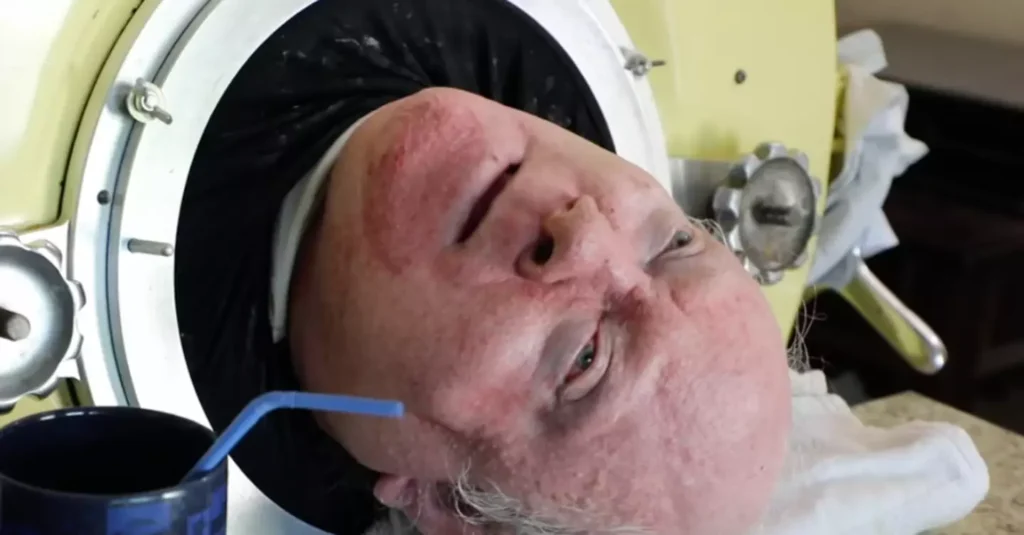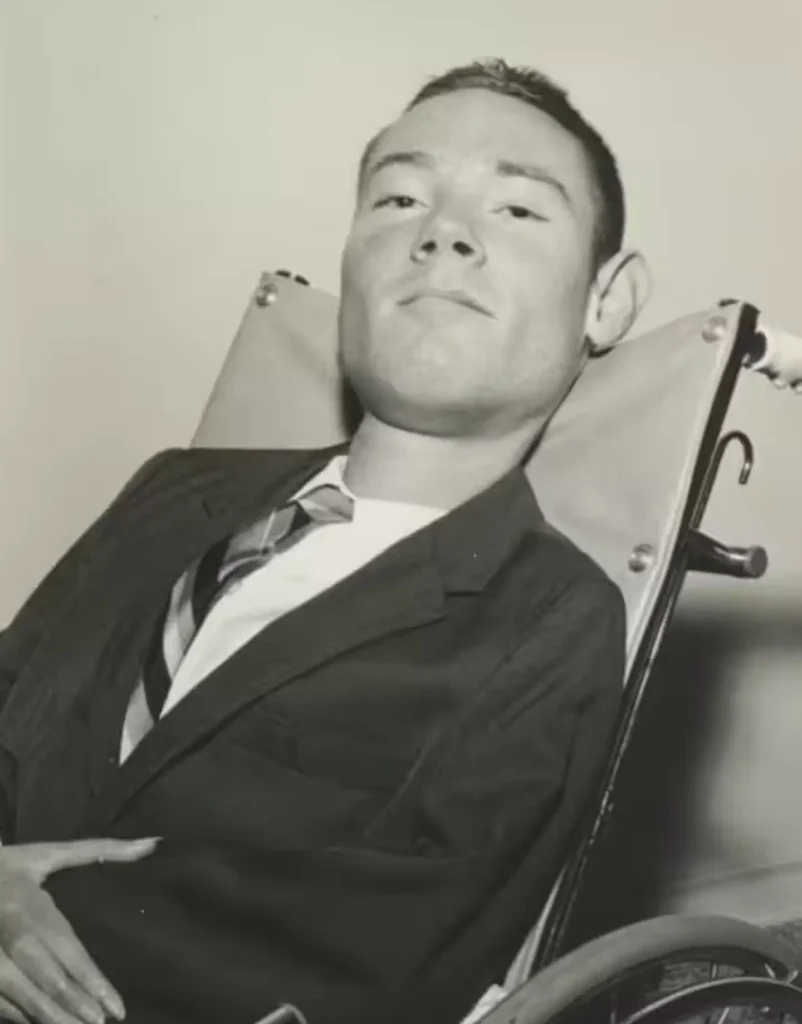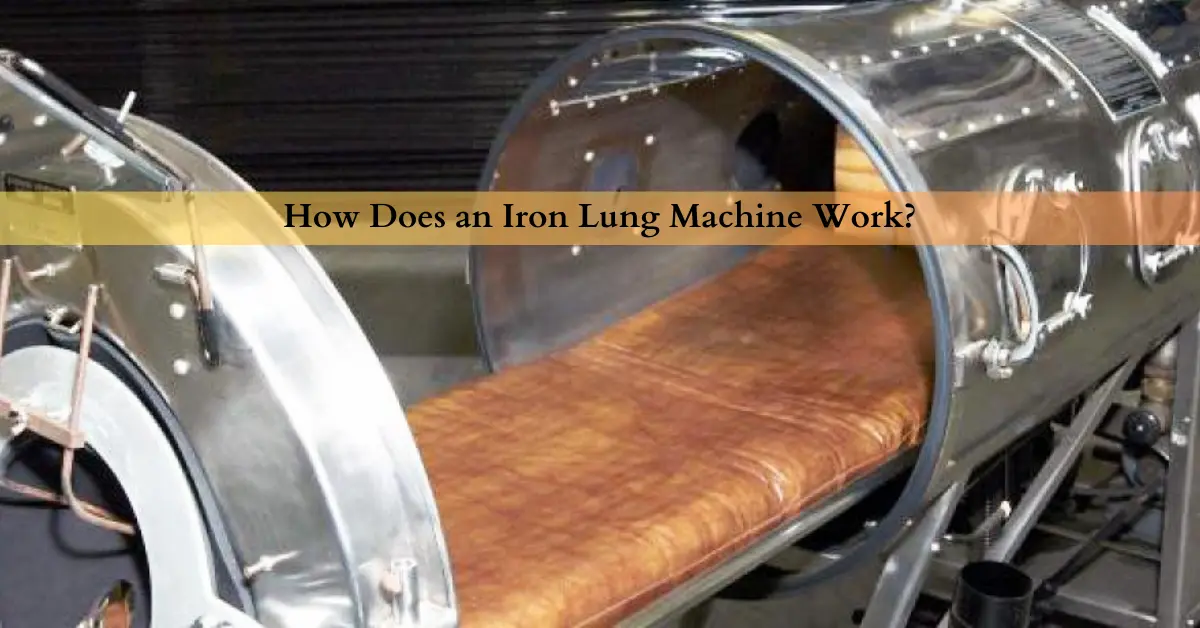There are very few inventions that stand as iconic symbols of innovation and perseverance as the iron lung machine. This mechanical apparatus played a pivotal role in revolutionizing the treatment of polio and other respiratory conditions during the 20th century. This negative pressure ventilator played a crucial role in keeping people alive during a time when a terrible disease threatened their very breath.
From its inception to its eventual decline with the advent of modern ventilators, the iron lung remains a testament to human ingenuity in the face of adversity. But how does an iron lung machine work? Let’s delve into the mechanics of this life-saving machine.
What is an Iron Lung?
An iron lung, also known as a negative pressure ventilator or tank respirator, is a large cylindrical chamber designed to assist individuals in breathing when their respiratory muscles fail to function properly. It gained prominence during the mid-20th century, particularly during polio epidemics, as a lifesaving device for individuals afflicted with paralysis of the diaphragm or other respiratory muscles.
Iron Lung Machine: A Symbol of Hope
The development of the iron lung in the 1920s by Philip Drinker and Philip Shaw was a medical breakthrough. Polio, a highly contagious viral illness, could cause paralysis of the diaphragm and intercostal muscles, making breathing impossible. The iron lung provided a critical lifeline for these patients, allowing them to breathe and survive.
How Does an Iron Lung Work?
The principle behind the operation of an iron lung revolves around negative pressure ventilation. Unlike modern ventilators, which use positive pressure to inflate the lungs, iron lungs create a vacuum around the patient’s torso, causing the chest cavity to expand and contract, thereby simulating the natural process of breathing.
Here’s a step-by-step breakdown of how an iron lung machine functions:
- Enclosed Chamber: The patient lies inside a sealed cylindrical chamber made of metal or plastic, with only their head protruding from one end. The chamber is airtight to maintain the necessary vacuum.
- Vacuum Pump: Connected to the chamber is a vacuum pump, typically powered by an electric motor. This pump continuously removes air from the chamber, creating a negative pressure environment.
- Pressure Differential: As the vacuum pump operates, the pressure inside the chamber decreases, causing the patient’s chest wall to expand outward. This expansion lowers the air pressure inside the lungs, drawing air in through the nose and mouth.
- Contraction Phase: When the vacuum pump ceases operation or reverses its action, the pressure inside the chamber returns to normal. This causes the patient’s chest wall to contract, exhaling air from the lungs.
- Adjustable Settings: Iron lungs were equipped with various controls to adjust the rate and depth of breathing, allowing healthcare providers to customize treatment according to individual patient needs.
The iron lung machine represents a remarkable feat of engineering, providing a lifeline for countless individuals affected by respiratory paralysis. Its design allowed patients to receive prolonged respiratory support while their bodies recovered from the effects of diseases like polio.
Although the iron lung has largely been replaced by modern ventilators, its impact on the history of medicine cannot be overstated. By harnessing the power of negative pressure ventilation, this ingenious device prolonged and saved countless lives during a time of medical crisis.
And a great proof to this testament was Paul Alexander who survived for 70 years on iron lungs. Today, it serves as a reminder of humanity’s resilience in the face of adversity and the enduring legacy of innovation in healthcare.
Also read: The Man Who Saved Me on My Isekai Trip Is a Killer: Is there an Anime Adaptation? When Is the Release Date?
An Extraordinary Life: How Paul Alexander Defied the Odds Inside an Iron Lung
How Was It Possible for Paul Alexander to Survive In an Iron Lung?

Paul Alexander’s story is a testament to the human spirit’s resilience. Diagnosed with polio at a young age, he faced a future seemingly confined to an iron lung, a machine many associate with a bygone era. Yet, Paul defied expectations, living a full and accomplished life for over 70 years within this remarkable medical device.
The Man in an Iron Lung (A Polio Survivor’s Story) I Special Books by Special Kids
Polio’s Grip and the Iron Lung’s Embrace
Polio, or poliomyelitis, is a highly contagious viral illness that can attack the nervous system, leading to paralysis. In the mid-20th century, before the widespread availability of the polio vaccine, this disease posed a significant threat. For Paul, polio struck at the tender age of six, leaving him paralyzed from the neck down and unable to breathe independently. This is where the iron lung entered his life.
The Iron Lung Machine: A Mechanical Breath of Life
The iron lung is a negative pressure ventilator, essentially a large metal cylinder with one sealed end. The patient lies inside, with their head protruding through a sealed neck collar. By rhythmically changing the air pressure inside the cylinder, the iron lung mimics the natural expansion and contraction of the chest cavity during breathing.
When the pressure decreases, air rushes into the lungs (inhalation). When the pressure increases, air is expelled (exhalation).
While cumbersome and confining, the iron lung offered a lifeline to polio patients who couldn’t breathe on their own. In 1945, at the age of six, Paul Alexander became one such patient.
Paralyzed from the neck down due to polio, he was placed in an iron lung, a machine that would become his constant companion for the next seven decades.
Paul Alexander: Living a Life Beyond the Machine
While the iron lung was a lifesaver, it came with limitations. Patients like Paul faced years of confinement within the machine. However, Paul’s story is an exceptional one. He, with the help of a dedicated physical therapist Mrs. Sullivan, learned a technique called glossopharyngeal breathing.
This technique allowed him to control the muscles at the back of his throat, pushing air into his lungs for short periods. This newfound ability offered him precious moments of freedom from the iron lung, enabling him to attend school, pursue higher education, and even become a lawyer.
Education, Advocacy, and a Life Well Lived
Despite the challenges, Paul Alexander pursued an education, becoming one of the first homeschooled students in the Dallas Independent School District. He graduated from college and even went on to become a lawyer and a published author.
He actively participated in online communities, using social media platforms like TikTok to connect with others and share his story. Paul Alexander’s life became a beacon of hope, demonstrating the power of determination and the potential for a full and meaningful life even with significant limitations.

Paul Alexander: A Legacy of Determination
Paul Alexander’s life serves as a powerful inspiration. It highlights the remarkable ability of the human body to adapt and the unwavering spirit that can overcome seemingly insurmountable challenges.
While the iron lung is no longer a primary treatment for respiratory failure, Paul’s story reminds us of the ingenuity and dedication that paved the way for modern medical advancements.
His life is a testament to the power of human will and the importance of seeking new solutions in the face of adversity.
Content Contributor: Juhi Saluja









